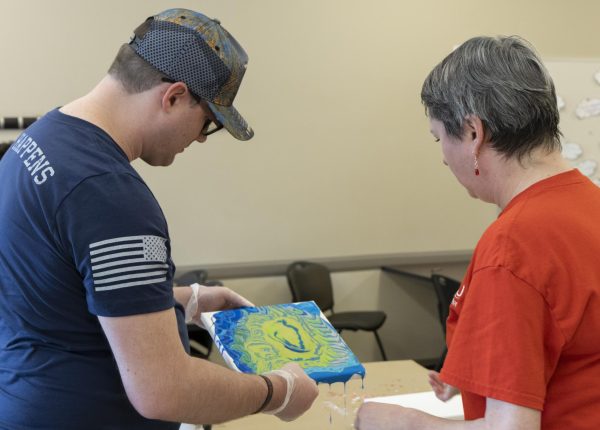One workout routine does not fit all
September 14, 2016
Candice Douglas, assistant director of facilities at Preston Center, exercises to stay healthy, and has no organized routine. She exercises in functional training, found in the fitness center, where personal trainers lead a session devoted to body weight training.
“I work out because I have to,” she said.
Fisherville freshman Stephen DeWitt, devotes every day to running. After suffering an injury that led to broken bones, he is trying to get back into his fitness routine he had when he was in high school.
“Every day, I try to run at least a mile,” he said. DeWitt runs twice a day, either around the indoor track in Preston or around campus, and averages around 2.2 miles. DeWitt said he adds weights to his routine four days a week.
A person’s workout regimen should center around his or her own needs, according to Andrew Jones, fitness coordinator at Preston. Factors such as a person’s age, sex, fitness level and measurements all play a part.
“When we put together our workout program, we find out what their experience has been, their goals and any health issues,” he said.
Jones explained there are recommended amounts of exercise for different categories, all standardized by the American College of Sports Medicine.
“There are five components of fitness: cardio, muscular strength, muscular endurance, flexibility and body composition,” Jones said.
To maintain health fitness, three to five days of cardio and two to three days of muscular strength and endurance are recommended. The goals will change depending on one’s needs.
The fitness center can test to see what a person’s fitness needs may be. For example, if one’s goal is to lose fat, the lab will test his or her body fat and put the person on an exercise program. Every week, the lab follows up to see if the person is losing fat, and adjusts the workout if not.
Jones said he works out two muscle groups every day he trains, and may work a group twice a day if he feels it is lagging. He adds cardio, including running and swimming, three times a week.
However, Jones knows his routine is not good for a person new to fitness. He believes many newcomers to fitness quit because they work out more than their bodies can handle, and develop delayed-onset muscle soreness, or DOMS.
According to ACSM’s website, DOMS develops 12 to 24 hours after a workout routine, causing the body to feel sore for days. Swelling and stiffness can occur as well. A person can achieve fitness without any pain, and newcomers to fitness should ease into their activities. A fitness evaluation, which is offered by Preston, is recommended before exercising.
Another way to prevent pain is through stretching. Jones ends his workouts with stretching, and believes this exercise is something people overlook. According to the ACSM, stretching your muscles before every workout can prevent injury and help loosen the muscles to help performance.
Reporter Adam Sims can be reached at 270-745-2655 or [email protected].












![Students cheer for Senator at Large Jaden Marshall after being announced as the Intercultural Student Engagement Center Senator for the 24th Senate on Wednesday, April 17 in the Senate Chamber in DSU. Ive done everything in my power, Ive said it 100 times, to be for the students, Marshall said. So, not only to win, but to hear that reaction for me by the other students is just something that shows people actually care about me [and] really support me.](https://wkuherald.com/wp-content/uploads/2024/04/jadenmarshall-1200x844.jpg)






